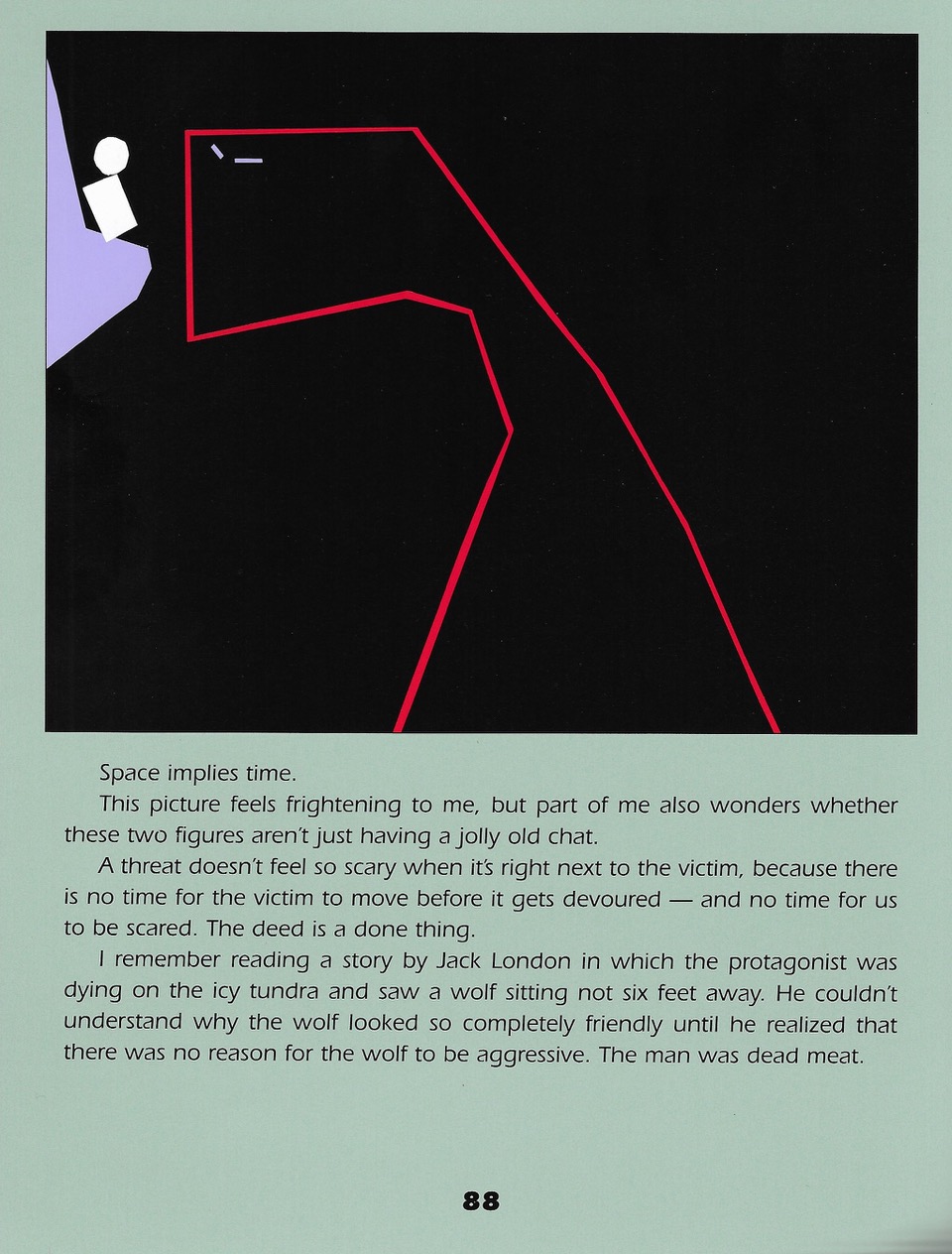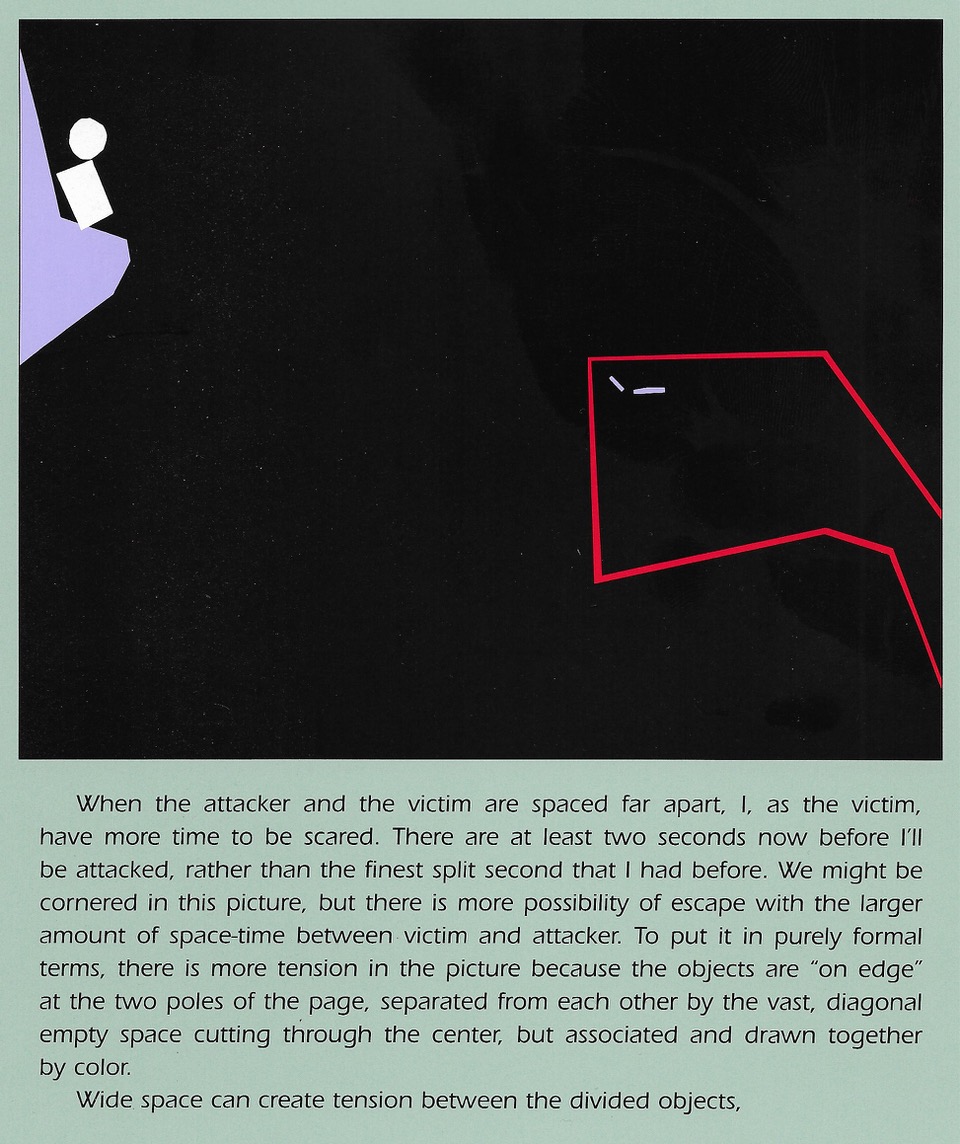Anthony Dina asked a quirky question last week about a machine that makes nightmare sounds.
He suggested I might ask Jeff Sexton for a response. Well, Anthony, I did that for you. And now you’re about to learn what every Wizard of Ads Partner has known for a long time: never ask The Professor a question unless you really, truly want to know the answer. Because that dude will give you hours of his life. Deep research. No half-hearted answers. If anyone else out there really, truly wants to know something, send your Question for The Professor to indy@wizardofads.com and I’ll get it to the Sextonian for you. Aroo. – Indy
Here’s The Professor’s reply:
Anthony Dina asks a very deep question. An entire book in multiple volumes could probably be written in response.
The short answer involves a few things:
1) There’s a correspondence to music/sounds and shape along with emotion. Roy has already covered much of this in Thought Particles. If you recall his bit about the Taketa and the Naluma and how the Taketa corresponds to the sharp pointy object and the Naluma corresponds to the round smooth object, you’ll get a lot of this. In fact, if you’ve got problems with your perception of sound, you’ll have problems with your spatial perception as well:
http://mindblog.dericbownds.net/2007/07/tone-deafness-is-associated-with.html
And I hat to expound on the intuitively obvious, but we inherently fear the sharp, pointy, and jagged. Our thin-skinned bodies are vulnerable to such things. So jagged shapes in pictures create tension and negative emotions. If you’ve never read Molly Bang’s amazing book “Picture This,” you should, because she demonstrates this dynamic with astounding clarity. Here’s a YouTube video that gives you a bit of taste of the book:
https://www.youtube.com/watch?v=LVWTQcZbLgY
2) Jagged sounds do the same thing that jagged shapes do, but with even greater emotional intensity. Disonnant, unharmonious, and SHARP sounds create extraordinarily negative feelings. And if you’re wondering WHY this is, well, there’s a lot of speculations, but some of it has to do with the human wail or baby’s cry, which even when it is healthy causes an immediate emotional response in all humans, and when it is unhealthy, causes an even worse response. You can dive down that rabbit hole as deep as you want to go:
http://www.edu-cyberpg.com/Literacy/whatresearch4.html
3) We are inherently rhythmic beings. And as part of that, we respond to tempos. Fast tempos create tension and anticipation. Faster than resting heartbeats. Plus, the ticking sound also implies time not only passing but being “marked,” as in counted down toward… something.
4) But the more important part of “rhythmic” is our inborn sense of call-and-response. Of the need to be in-sync. When this is violated, and things seem out of sync, it’s a bad feeling.
5) From a sound perspective, tension is created when we introduce chords or sounds that don’t resolve. There’s a call, but no response. No closure is granted to us. And this creates a lot of tension. In fact, it helps here to talk about Hitchcock’s famous lesson on the difference between suspense and surprise:
https://www.youtube.com/watch?v=DPFsuc_M_3E
6) Getting back to the spatial-sound-emotional correspondence, Molly Bang talks a bit about this in her book. Here are a couple of pages that illustrate an important idea.


So what you end up with is the notion that lots of time between introducing a disconsonant sound and resolving it — or never resolving it, creates a maximum of auditory and emotional tension. To put it into Thought Particle terminology, the point of particle conflict is to create interest, but that interest has to be pointed somewhere and then paid off. If you continually just create interest with maximum particle conflict, it’s fatiguing and unnerving. We look for the interest to pay off with particle stack. With closure. When we don’t have that, it’s a shitty feeling.
8) Composers have known about this for a long time, and it’s most famous classical use is in Wagner’s opera Tristan and Isolde:
https://en.wikipedia.org/wiki/Tristan_und_Isolde#Significance_in_the_development_of_romantic_music
Tristan und Isolde is also notable for its use of harmonic suspension – a device used by a composer to create musical tension by exposing the listener to a series of prolonged unfinished cadences, thereby inspiring a desire and expectation on the part of the listener for musical resolution.[16] While suspension is a common compositional device (in use since before the Renaissance), Wagner was one of the first composers to employ harmonic suspension over the course of an entire work. The cadences first introduced in the Prelude are not resolved until the finale of Act 3, and, on a number of occasions throughout the opera, Wagner primes the audience for a musical climax with a series of chords building in tension – only to deliberately defer the anticipated resolution. One particular example of this technique occurs at the end of the love duet in Act 2 (“Wie sie fassen, wie sie lassen…”) where Tristan and Isolde gradually build up to a musical climax, only to have the expected resolution destroyed by the dissonant interruption of Kurwenal (“Rette Dich, Tristan!”). The deferred resolutions are frequently interpreted as symbolising both physical sexual release and spiritual release via suicide. The long-awaited completion of this cadence series arrives only in the final Liebestod (“Love-Death”), during which the musical resolution (at “In des Welt-Atems wehendem All”) coincides with the moment of Isolde’s death.[17]
The tonality of Tristan was to prove immensely influential in western Classical music. Wagner’s use of musical colour also influenced the development of film music. Bernard Herrmann‘s score for Alfred Hitchcock‘s classic, Vertigo, is heavily reminiscent of the Liebestod, most evident concerning the resurrection scene. The Liebestod was incorporated in Luis Buñuel‘s Surrealist film L’Age d’Or. Not all composers, however, reacted favourably: Claude Debussy‘s piano piece “Golliwog’s Cakewalk” mockingly quotes the opening of the opera in a distorted form, instructing the passage to be played ‘avec une grande emotion’. However, Debussy was highly influenced by Wagner and was particularly fond of Tristan.Frequent moments of Tristan-inspired tonality mark Debussy’s early compositions.
Just take a listen:
https://www.youtube.com/watch?v=lQNcTYVlcEg
Did you catch the connection between Wagner’s music and Hitchcock? Yeah, not an accident.
Also not an accident that Tristan and Isolde was a love TRIANGLE — Isolde was a married woman.
9) Modern film composers continue to use these tricks, with Christopher Nolan and Hans Zimmer being especially fond of the Shepherd’s tone combined with ticking, which delays closure infinitely:
https://www.youtube.com/watch?v=LVWTQcZbLgY
So… what you have with the nightmare machine are various ways of creating highly jagged, disconsonant sounds that never resolve, while introducing high-beat, unnerving tempos. And this creates an emotionally unnerving sense of impending doom and suspense, which is just about perfect for a horror movie.
Jeff Sexton
Partner, Wizard of Ads Group
